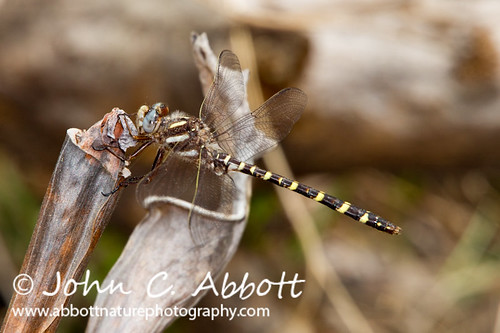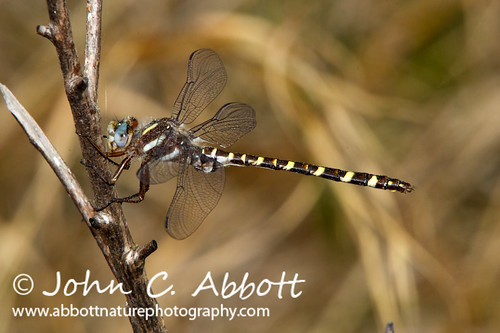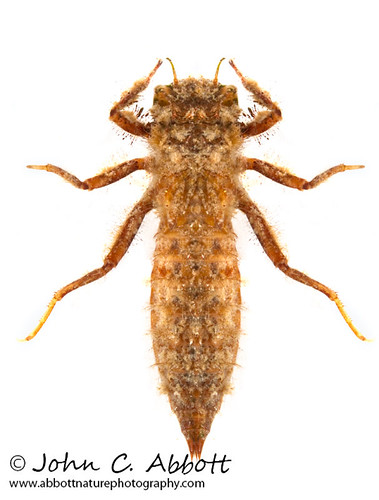I just described a new species of dragonfly in the genus
Cordulegaster. The common name for this family of dragonflies is Spiketails because the females typically have long ovipositors making it look like they have a spiked tail. The formal description of the species should be in print in a couple of months, but here are some pictures. It seems to have a strong association with Pitcher Plant bogs and is now known in five counties in Texas and just over the border in western Louisiana. I will be describing the larva soon. This species probably remained undiscovered because of its very early flight season (March-April) and restricted habitat of pitcher plant bogs. I'm hoping to learn more about its natural history this spring.

Male perched on a dead pitcher plant.

Male.

Female

Larva.

Exuviae or shed skin.











Wow! These are amazing!
ReplyDeleteJohn,
ReplyDeleteA terrific precedent and nice reward for all your efforts with ode central!
How were you able to link the exuvia to this species?
Best,
John
Very interesting and very nice pictures !
ReplyDeleteRegards,
Olivier Esnault
John - this is all so amazing and wonderful. Thanks for posting. I've forwarded the discovery on to the CalOdes and SoWest Odes groups as inspiration!
ReplyDeleteJohn,
ReplyDeletePretty cool ode! I can see how it could have been overlooked.